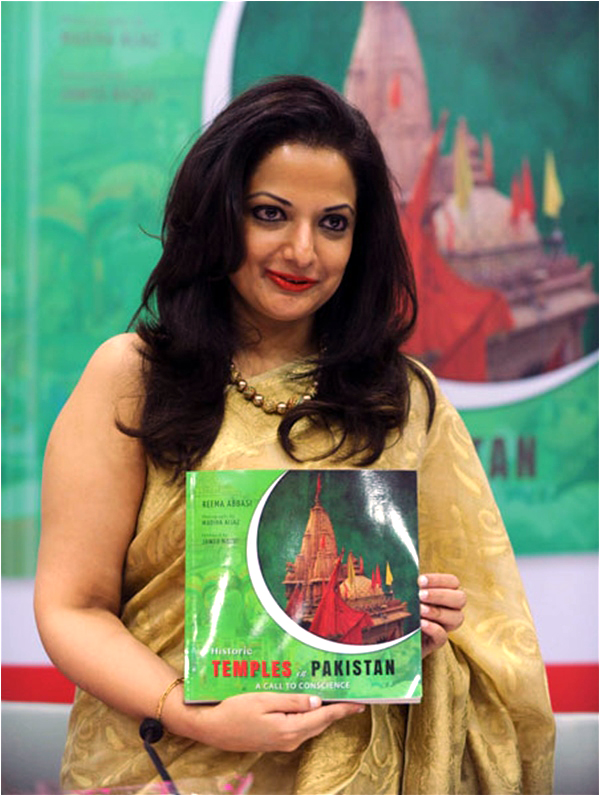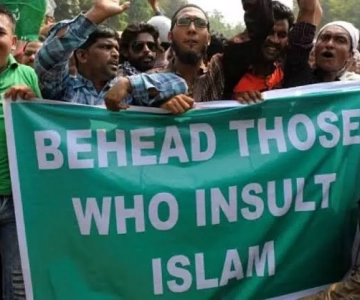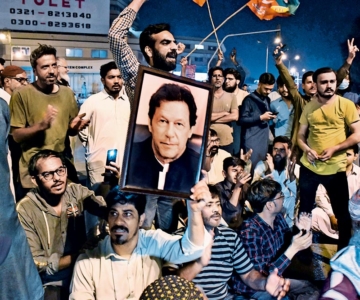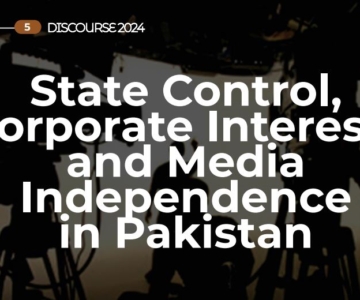Author Reema Abbasi spoke to me about her travels across the country while researching for “Historic Temples in Pakistan”. Some excerpts from the conversation.
What was the inspiration to author a book on Pakistani temples?
For the last 10 years my reporting, columns and editorials concentrated on socio-political issues with a strong focus on secular values already enshrined in Islam. The tide of Islamism eclipsed Pakistan’s happy confluence one grew up in. So I felt it was time to make a concrete contribution through a topic that fused history through antiquated symbols of unity ‘which, in this case, belong to the ancient faith of Hinduism’ and an essentially tolerant populace that believes in humanity and the pull of history.
This is why the book is ‘Historic Temples in Pakistan: A Call to Conscience’ as it documents structures that can challenge time and shuns the idea of the supremacy of any singular faith. Every call to prayer demands respect.
Your book tells us multiple stories. The temples are endangered but there are positive stories as well. How would you give an overall view?
By and large, Pakistan and its communities deserve much praise for the upkeep of these age-old treasures. Many are now heaps of stones such as Tilla Jogian or Suraj Kund, but then disuse does that all over the world. Our over a year long journey across the country was an eye-opener. It sprang one surprise after another and assailed many presumptions with Kali Ki Gali in Peshawar, Shivala Mandir in Mansehra, a pujari’s words in Pindi: “Yeh mutthi bhar dehshatgard kitna bigaar leingay?” to name a few.
But Punjab broke my heart, especially Lahore, a jewel layered with many diverse eras, has forced its Hindus to live with the greatest of burdens, false identity. They live lies by adopting Christian names.
Has the Sindh government proven to be a better guardian of the Hindu places of worship than other governments? Or is it the same story everywhere?
Sindh has done a tremendous job of maintenance, restoration, and reverence, so has Balochistan with Hinglaj and much of KPK honours its shrines. Punjab has lost over 1000 pre-historic emblems to neglect, greed and bigotry.
How has the book been received in Pakistan? Did you get the usual anti-Pakistan and anti-Muslim rants or is there a constituency for such narratives?
There is tremendous demand for the book, which is now on its way here. The formal Pakistan launch is in the winter at an eminent festival. But, temples are exoticised.
I hope people recognize that the book is not about a particular faith or an album of temples
I hope people recognize that history is worth worshiping; that the book is not about a particular faith or an album of temples.
It has a loud message: “As long as life is infinite, faiths will remain indestructible” with extensive archaeological and sociological research.
The anti-Pakistan and anti-secular sentiment has come my way, however, so far positive voices are louder.
In India, for obvious reasons, the book has been well-recieved. Has it reinforced the stereotypes about Pakistan or led to a better understanding of the state of affairs in the country?
The chronicle has been welcomed like a breath of fresh air from Pakistan. The audiences, media, political leaders, booksellers, readers, and academics were so open to this window into a troubled neighbour. It was beyond all expectations, including the fifth Rajiv Gandhi Excellence Award as literary personality of the year.
I am happy to report that it seemed like a collective sigh of relief and surprise.
I was initially haunted by one question from Indians: there are temples in Pakistan?
Did people in India know that there were so many temples in Pakistan?
No they didn’t. In fact, initially I was haunted by one question: ‘there are temples in Pakistan?’
It was astonishing and even more so when it came from regular visitors or supposed Pak-Indo experts. The answer to that was, ‘It is like asking, do you still have masjids?’….There are RSS, Shiv Sena, VHP, but can anyone wipe out antiquity?’
Most importantly, temples have not been attacked on the basis of faith in Pakistan “land grab and IDPs have tried but greed and desperation are global. Extremists have killed more Muslims and razed mosques because they didn’t submit to Islamism.”
What is the way forward to protect non-Muslim places of worship and what would be the three most urgent steps for the state?
More responsible and effective Auqaf and archaeological departments, security especially during festivals and in the age of a politically-correct lexicon, replacing ‘minorities’ with ‘communities’ as the former erodes political claim.
This in turn effects their employment, education, marriage registrations and weakens their right to justice, making their children easy prey for trade, abuse, child-labour and forced conversions.
Anything memorable while researching for the book? An anecdote that you would like to share with TFT readers?
There were many and most are in the book “Pakistan’s only Brahmachari, Prem in Umerkot, was fascinating.
Above all, we escaped police interrogation, and possible tyranny, because we were going to Nani ka Mandir (Hinglaj) and not to the government rest house. In fact we were safer under a starry sky at Hinglaj as opposed to an austere, silent night at the official guesthouse.
To find safety in Hinglaj and not in government facilities is an unforgettable and eloquent memory, to say the least.



